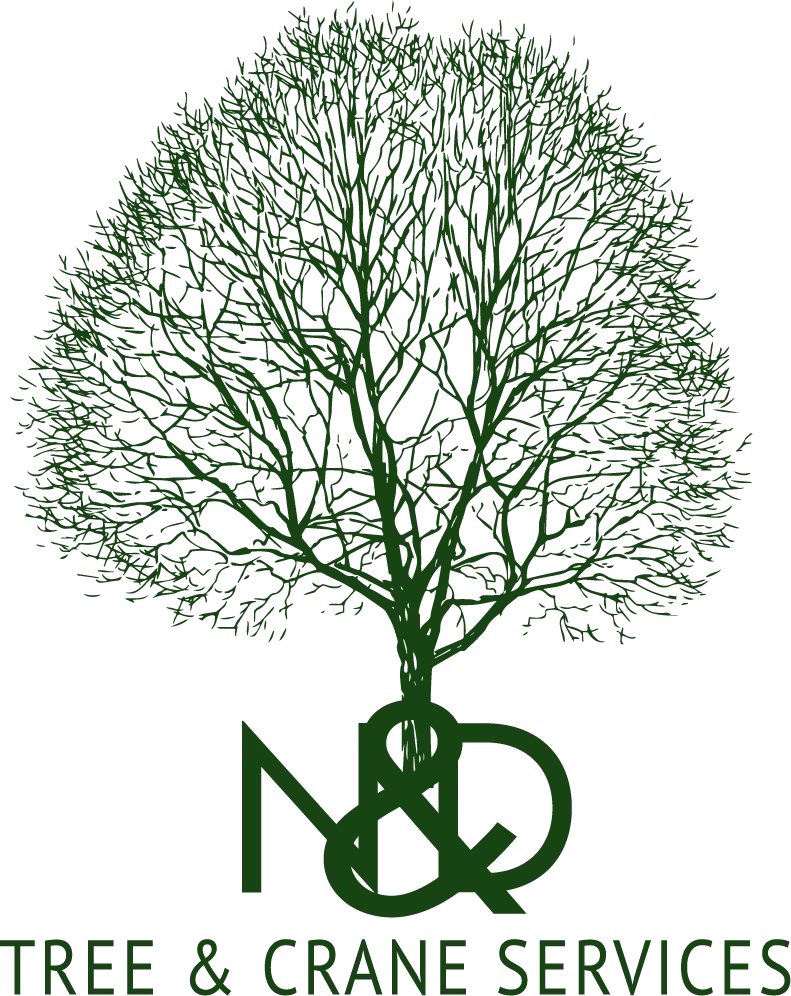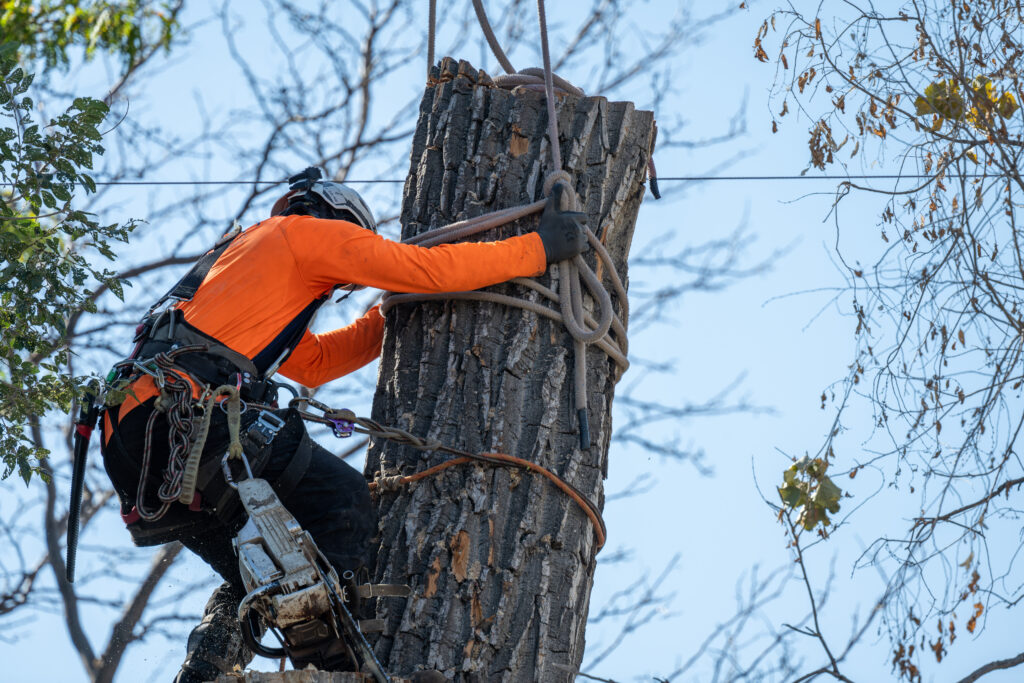A Homeowner’s Guide to Deep Root Feeding and Tree Nutrition
The health and beauty of the trees on your property are a significant asset, contributing to its value and your enjoyment. While we often focus on what we can see, the leaves, branches, and trunk, a tree’s true vitality begins out of sight, deep within the soil. At N&D Tree & Crane Services, our approach to tree care is rooted in a scientific understanding of this hidden world. This guide will explain the critical role of tree nutrition, the limitations of common DIY methods, and how our professional deep root feeding service provides a foundational solution for the long-term health of your Colorado landscape.
The Unseen Struggle: Why Urban Trees Need Nutritional Support
Trees in a natural forest setting exist in a perfect, self-sustaining system. A rich layer of decomposing leaves and organic matter constantly replenishes the soil with essential nutrients, while the uncompacted ground allows roots to spread freely. The trees in our yards, however, live in a very different and often hostile environment.
The Forest vs. The Front Yard: Two Soils
The typical suburban landscape is a challenging place for a tree. Instead of a nutrient-rich forest floor, trees are surrounded by dense turfgrass, which is a formidable competitor for both water and surface-level nutrients. The soil itself is often heavily compacted from construction, stripped of its native topsoil, and is typically alkaline, which “locks up” vital micronutrients like iron and manganese, making them unavailable to the tree. We meticulously rake and remove fallen leaves each autumn, interrupting the natural cycle of decomposition and nutrient return that trees have relied upon for millennia.
“A Stressed Tree is a Susceptible Tree”: The Root Cause of Problems
This is the core of our Plant Health Care philosophy. Very rarely is a perfectly healthy tree attacked by insects or overcome by disease. More often, these issues are merely symptoms of a deeper, underlying problem: chronic stress. In the urban forest, these stressors are numerous: inadequate water, poor soil quality, soil compaction, improper planting depth, reflected heat from pavement, and pollution are just a few. While we cannot control all these factors, we can strategically address one of the most critical: soil nutrition. By enriching the root zone, we bolster a tree’s natural defense systems, making it more resilient to the secondary problems of pests and disease.
What is Deep Root Feeding? A Scientific Approach
Deep root feeding is a professional arboricultural technique designed to deliver essential nutrients, minerals, and organic matter directly into a tree’s root zone. It is a highly effective method that bypasses the problems of surface application and ensures the tree gets exactly what it needs, where it needs it.
Beyond Surface Fertilization: The Limits of DIY Methods
Many homeowners attempt to fertilize their trees using methods like fertilizer spikes or by simply spreading granular lawn fertilizer. While well-intentioned, these methods are largely ineffective for trees. Fertilizer spikes release nutrients very slowly and only in a few concentrated spots, failing to nourish the entire, sprawling root system. Granular lawn fertilizers are designed for the shallow roots of turfgrass; the grass will absorb a large percentage of the nutrients before they ever reach the tree’s deeper roots. Furthermore, these products are often heavy in nitrogen which can lead to increased susceptibility to insects and disease.
How Our Professional Injection Process Works
Our deep root feeding service utilizes specialized, high-pressure equipment to overcome the limitations of surface methods. A trained technician inserts a professional injection probe into the soil at multiple locations throughout the tree’s critical root zone, which typically extends across the area beneath its canopy. The liquid, custom-blended fertilizer solution is then injected under pressure, permeating the soil and reaching the fine, absorbing roots that are the key to nutrient uptake. This process also provides a secondary benefit: it helps to aerate compacted soil, creating channels for oxygen and water to penetrate more effectively.
The Science in the Soil: What’s in Our Custom Nutrient Blends?
Unlike generic, off-the-shelf products, our fertilizer solutions are specifically formulated by our CDoA Qualified Supervisor Applicator to address the known challenges of Colorado soils and the specific needs of your trees.
Macronutrients: The Building Blocks of Health
Like all plants, trees require a balanced ratio of the primary macronutrients to thrive. Our blends contain Nitrogen (N) for vigorous leaf and stem growth, Phosphorus (P) for healthy root and flower development, and Potassium (K) for overall resilience, water regulation, and disease resistance. We adjust these ratios based on the time of year and the specific goals of the treatment.
Micronutrients: Solving for Colorado’s Alkaline Soils
This is where professional formulation truly matters. Colorado’s alkaline soils often make essential micronutrients like iron and manganese insoluble and unavailable to trees, even if they are present in the soil. This leads to a common condition called chlorosis, where leaves turn yellow while the veins remain green. Our nutrient blends include chelated iron and other micronutrients in a form that is readily available for the tree to absorb, directly treating and preventing these widespread deficiencies.
The Role of Humates and Soil Microorganisms
A healthy soil is a living ecosystem. Our treatments often include humates and other organic components designed to improve soil structure and feed the beneficial soil microorganisms that are essential for nutrient processing. Healthy soil biology helps trees process nutrients more effectively, creating a more sustainable and resilient root zone environment. This focus on soil health is a key part of our holistic approach.
Practical Guidance for Colorado Homeowners
Understanding the signs of nutrient deficiency and the principles of proper care can help you make informed decisions about your landscape.
How to Know if Your Trees Need Fertilization
Look for the visual cues of a tree under stress. The most common sign in our area is the yellowing leaves of chlorosis. Other indicators include unusually slow or stunted growth, smaller-than-normal leaves, a generally thin and sparse canopy, or premature fall coloration. These are all signs that the tree is struggling to get the essential building blocks it needs and would likely benefit from a targeted nutrient application.
When is the Best Time to Fertilize?
Spring and fall are typically the most effective times for deep root fertilization. A spring application provides an immediate supply of energy to fuel the growth of new leaves and shoots after winter dormancy. A fall application, administered after leaves have dropped but before the ground freezes, is highly beneficial as the tree is focused on absorbing and storing resources in its root system for the winter, which supports winter root development and provides a strong start for the following spring. Summer applications are also beneficial as they often focus more heavily on building healthy soils.
The Role of Fertilization in a Complete Plant Health Care (PHC) Program
Deep root feeding is a cornerstone of, but not a replacement for, a complete Plant Health Care (PHC) program. True long-term health is achieved by integrating proper nutrition with other practices like expert structural pruning, correct watering habits, and targeted management of any insect or disease issues. Our ISA Certified Arborists look at the entire picture to develop a holistic strategy that ensures your trees are not just surviving, but thriving.
Why Professional Application Matters
The effectiveness and safety of a fertilization treatment depend entirely on the expertise of the person performing it.
The Expertise of a Certified Arborist and Licensed Applicator
Our process is led by an ISA Certified Arborist who first diagnoses the health of your trees. This ensures we are treating the correct problem. The treatment itself is overseen by a CDoA Qualified Supervisor Applicator, which guarantees that all products are handled, mixed, and applied according to strict state regulations and the highest safety standards. This level of professional oversight is something DIY methods can never replicate.
Safety, Efficiency, and Long-Term Results
Our deep root injection method is safe for your lawn, children, and pets, as the product is delivered below the surface with no lasting residue. By using a scientifically formulated product and a professional application method, we ensure the most efficient use of resources and the best possible long-term results. It is a professional investment in the lasting health, beauty, and value of your property.
A proactive approach to tree nutrition is the most effective way to protect your valuable landscape assets. By addressing the unseen struggles in the soil, you can ensure your trees remain a vibrant and resilient part of your Colorado home for decades to come.


